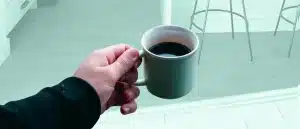Bryan Johnson Says He’s Now a ‘Genetically Enhanced Human’
P
roject Blueprint founder and tech billionaire Bryan Johnson claims he is now a “genetically enhanced human.” The reason: he recently underwent follistatin gene therapy to boost his lifespan and unwind aging.
The treatment isn’t FDA approved. But animal studies suggest that follistatin gene therapy may be a promising longevity treatment.
According to Johnson, follistatin therapy has benefits like “epigenetic age reduction, monitoring organs for possible improvements, improved muscle volume and strength, and reduced speed of aging.”
What is Follistatin?
Follistatin is a glycoprotein—a compound made of sugar and protein molecules—which is frequently found in the liver (1). This compound plays a role in promoting cell growth and increasing muscle tissue, which is why it is sometimes used for people with muscular dystrophy (2).
Several animal studies found that mice who were injected with follistatin had improved muscle composition and bone density, decreased body fat and increased lifespan (3). However, the benefits of follistatin have yet to be studied on healthy human participants.
BOOST YOUR HEALTHSPAN
How to Boost Follistatin
While it’s hard to access follistatin gene therapy if you aren’t a well-connected, longevity-obsessed billionaire (at least for the time being), there are several ways to boost your follistatin levels without buying price-y injectables.
Foods with follistatin
Only a few foods—like egg yolks—contain follistatin. However, soy isoflavones and epicatechin (a type of polyphenol) may increase your follistatin levels (4, 5).
Foods with epicatechin:
- Dark chocolate
- Raw apples
- Almonds
- Black and green teas
- Blueberries
- Blackberries
- Red wine
Foods with soy isoflavones:
- Tofu
- Soy milk
- Edamame
- Miso soup
Exercise
Men who engaged in cycling or one-legged knee extensor exercises during an intermittent fasting period had higher levels of follistatin, according to a 2011 year study (6). Following three hours of cycling, follistatin levels peaked by 7-fold three hours into recovery.
References
1. Hansen, et al (2011). Exercise induces a marked increase in plasma follistatin: evidence that follistatin is a contraction-induced hepatokine.
2. Al-Zaidy, et al (2015). Follistatin Gene Therapy Improves Ambulation in Becker Muscular Dystrophy.
3. Iyer, et al (2022). Follistatin-induced Muscle Hypertrophy in Aged mice Improves Neuromuscular Junction Innervation and Function.
4. Handayani, et al (2006). Soy isoflavones alter expression of genes associated with cancer progression, including interleukin-8, in androgen-independent PC-3 human prostate cancer cells.
5. Salmean, et al (2014). Effects of (−)-epicatechin on molecular modulators of skeletal muscle growth and differentiation.












